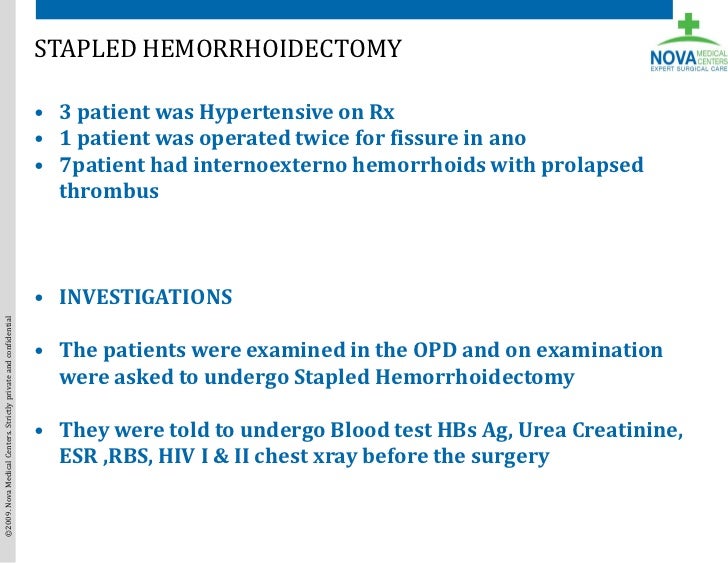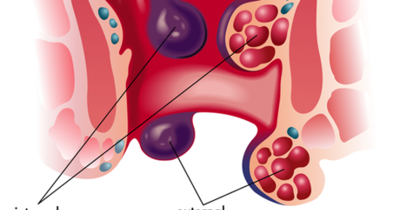

Complications following open hemorrhoidectomy are similar to those that occur after closed hemorrhoidectomy. Often, a combination of open and closed technique is utilized. Surgeons may opt for open hemorrhoidectomy when the location or amount of disease makes wound closure difficult or the likelihood of postoperative infection high. In an open hemorrhoidectomy, hemorrhoidal tissue is excised in the same manner as in a closed procedure, but here the incision is left open.
Before and after stapled hemorrhoidectomy license#
2008 Jul 28 , Creative Commons Attribution 3.0 License Open Hemorrhoidectomy New methods are being devised to decrease the pain associated with the surgery and should allow for a better patient experience. Although this technique has the most postoperative discomfort and pain, it does have the best long term results with the lowest recurrence rates. Potential complications include pain, delayed bleeding, urinary retention/urinary tract infection, fecal impaction, and very rarely, infection, wound breakdown, fecal incontinence, and anal stricture.

Closed hemorrhoidectomy is successful 95% of the time. Postoperative care includes frequent sitz baths, mild analgesics, and avoidance of constipation. Typically all three hemorrhoidal columns are treated at one time. It consists of the excision of hemorrhoidal bundles using a sharp instrument, such as a scalpel, scissors, electrocautery, or even laser followed by complete wound closure with absorbable suture. Stapled Hemorrhoidectomy (Procedure for Prolapse and Hemorrhoids - PPH)Ĭlosed hemorrhoidectomy is the surgical procedure most commonly used to treat internal hemorrhoids.Types of hemorrhoidectomies and related procedures performed during surgery: Where patients who cannot tolerate or fail minimally invasive procedures.Where there are additional anorectal conditions that require surgery.Symptomatic grade III, grade IV, or mixed internal and external hemorrhoids.A hemorrhoidectomy is performed in the following settings: Illustration reprinted with permission from the American Society of Colon and Rectal Surgeons. Surgical hemorrhoidectomy is the most effective treatment for hemorrhoids, though it is associated with the greatest rate of complications. A hemorrhoidectomy is surgery to remove internal or external hemorrhoids that are extensive or severe.


 0 kommentar(er)
0 kommentar(er)
